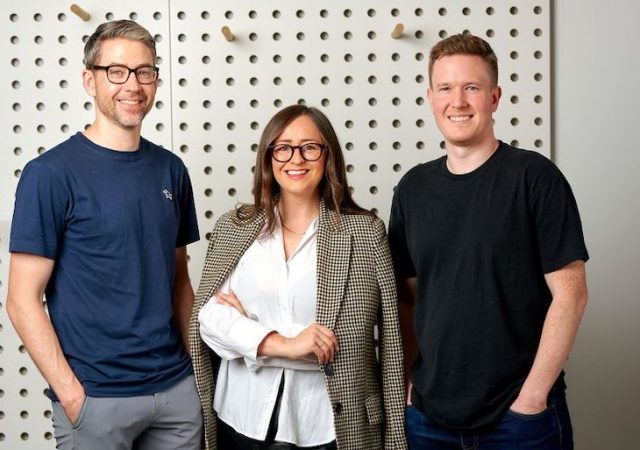If you’ve invested time and effort in developing content you want to be sure that your work is achieving your objectives. Measuring the success needs to be considered from three points of view – your objectives, the content itself, and whether your search engine optimisation techniques are working effectively. Let’s explore each to better understand them and how they work together.
What is Your Objective?
The very first thing you need to do is decide what it is you wish to achieve. How can you measure success if you are not crystal clear about what your goals are? This often overlooked stage should happen before you develop any content and before you even consider the structure and design of your website. What do you want to achieve?
Content Quality
Even if you are very organised and know exactly what you aim to achieve, you still have to provide high quality content. The material you produce needs to be engaging, informative, relevant, fresh, frequent, and above all, satisfy the needs of the visitor. Google’s search algorithms are all about matching user intent with relevant content. If you aren’t giving your visitors exactly what they are looking for you will not capture your audience effectively.
Effective Optimisation
Just as your content must be high quality, so too must its presentation. You need to make your website as friendly as possible for search bots so that they have no problems understanding and categorising your content. That means following best SEO practices. In 2018, that means ensuring your content is designed with a mobile-first strategy, responsive so it adapts to any screen size on any device, and fast loading.
Measuring Effectiveness
Now you’re in a position to quantify your success. It’s always important to set realistic, achievable goals. Sometimes we get overly enthusiastic about what we are offering. Aim to build your success incrementally and learn from your experiences. Don’t expect immediate results: it’s not uncommon for it to take six months to a year to see genuine SEO growth. Just ensure you’re always moving in the right direction and eventually you’ll get there.
Brand Recognition
If your objective is brand recognition you’ll want know whether you’re being noticed online. If we do a great job and our content is really appealing we might expect organic growth—that is people linking to our content because it is so good. These backlinks can improve our reputation and authority online. One of the best ways to measure this is to use sites like BrandMentions. These services scour the internet uncovering every mention of our brand or product.
Exposure / Public Awareness
Sometimes a start-up, NGO or charity exists solely to raise awareness of important issues. Those issues might be local, national, or international so measuring them isn’t always easy. Social awareness is probably best done through social media but a website still plays a role in getting the information “out there”. You can still get an idea of the effectiveness of your content by monitoring the traffic to your site. We’ll cover that in our last point.
Sales or Subscriptions
The majority of small businesses are interested in monetising their efforts through online or local sales, or subscriptions. The measure of success here is easy to determine because you can simply measure the dollar value of sales over a set time period. You can also keep an eye on income versus expenditure on advertising. If you’re doing well and sales are up you’ll be making money. You can also keep track of repeat customers – it’s a lot cheaper to re-engage an existing customer than to continually get new customers.
If you have a physical store you can ask customers how they found you and whether they’re aware of your online site. Don’t forget to register with Google My Business too—that gets you included in Google search results and Google maps automatically which is handy if people want to find a store near you that sells what you create.
Analysing Metrics
Investing time looking at the stats of your site is essential. The best place to start is Google Search Console. Sign in and add your site so you can make use of Google’s free tools to analyse traffic to your site. Under Search Traffic you can see data for incoming links, the type of devices people are visiting you on, and which countries your visitors are coming from (handy if you do business internationally).
In general, any growth in traffic online means you are achieving greater exposure online. That implies that your SEO is effective. But the real measure of success is whether you are meeting your objectives. For most small businesses that will usually mean an increase in sales. If you’re getting an increase in traffic without conversions then you’ll need to assess whether your offers are genuinely enticing—it’s one thing to get people to your page; it’s another entirely to generate a sale. Or maybe you know your product is amazing but maybe your content is letting you down. Users might not be able to tell from your write up how the products will benefit them. Although customers want the facts and technical specifications of a product, on some level most purchasing decisions are driven by a desire to fulfil an emotional need e.g. confidence, relaxation, success etc.
You can bolster the SEO and customer appeal of your content by:
– Including an FAQ page with long-tail keywords and common questions of concern e.g. “Is there a warranty?”, “Do you offer free shipping?”, “How to choose the right colour curtains for my living room?”, “What are the nutritional benefits of this dog food?” etc.
– Experimenting with different types of content – perhaps your audience are not big readers; mix it up with videos, photos and audio content and see if you get better results
– Including a call-to-action – Every page should feature an eye-catching button that encourages that encourages the user to take a specific action to meet your objectives e.g. “Buy now”, “Add to cart”, “Schedule free consultation”, “Download free e-book”, “Compare options”, “Click to call/chat” etc.
– Using alt tags for photo and video content so Google knows what the content is of and how to index it
– Making it easy for people to share your content by using social sharing buttons (this is especially important if your main goal is to boost brand awareness)
– As you can see, good content, marketing objectives and SEO all work together in tandem.
This article was first published on Kochie’s Business Builders.
Photo by Štefan Štefančík on Unsplash




















Trending
Daily startup news and insights, delivered to your inbox.